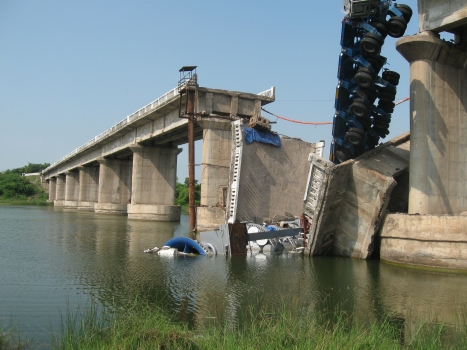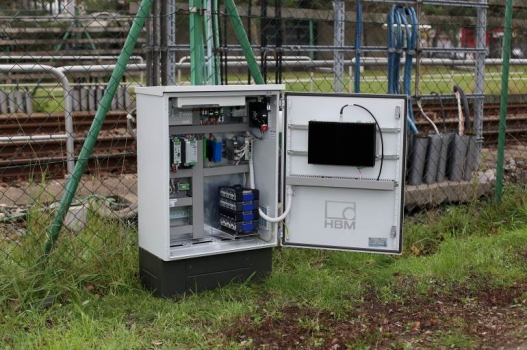Optimizing Structures with Continuous Monitoring Systems
The last few decades have seen an amazing boost in the number of existing civil-engineering structures as well as in the resistance that is required of them. Among these are larger bridges for heavier trucks, longer tunnels for accommodating more traffic, safer pipelines for transporting different materials, and wind turbines with an increased efficiency and higher capacity.
As these structures need to withstand the exponential increase of applied loads, impacts or environmental burdens, the assessment of the resulting structural behavior is becoming mandatory so that faults can be detected in the early stages and safety is guaranteed.
Visual inspections do not give enough information to extend the structures’ lifetime, but by monitoring the structural health, any anomalies can be detected in time. This will optimize maintenance and reduce operating costs.
With most industries still using reactive maintenance (run until failure) as an approach, the improvement of inspection techniques and failure prediction systems that have lower Operation and Maintenance (O&M) costs emerges as a top priority on the structures’ management agenda.
The importance of detecting critical assets
Civil structures are subject to various internal and external factors and impacts, which may cause wear or malfunction. Fatigue, inadequate maintenance, incorrect construction or lack of quality control, add damage to many existing structures, which in turn increases their deterioration rate.
Moreover, these structures are withstanding an exponential increase of loads that are constantly changing, leading to higher levels of induced stress i.e. higher risks of failure of the structure.
Additionally, larger and more complex infrastructures are being built with greater construction challenges, which makes it mandatory to assess their performance to guarantee safety.
The evolution and advancements in materials and construction technologies, as well as the usage requirements for those structures, have also dictated the need to validate sophisticated construction methods and new designs.
All these factors have led to an increase of Operation and Maintenance (O&M) costs and expensive repair actions that jeopardize ROI – Return on Investment.
Ultimately, it was recognized that there is a need to react predictively and adopt better maintenance practices. This could be done by developing cost-effective solutions for the early detection of critical assets and eventually, of damage.
Using the best maintenance approach
Many organizations, such as the Electric Power Research Institute, have come to the conclusion that acting predictively, rather than reactively, not only improves safety and avoids dangerous failures, but also represents high savings for the structure’s owner and operator.
The Deloitte University Press has also reported cases of companies for whom understanding the root of the malfunction ahead of time has enabled a more proactive response and represented huge savings in costs.
According to a McKinsey Global Institute report The Internet of Things: Mapping the Value Beyond the Hype, predictive maintenance will save companies and manufacturers hundreds of billions by the year 2025. Still, in reality it is quite the opposite – inspections are infrequent and often cursory. Visual inspections are still the most prevalent practice to monitor a structure’s integrity.
The argument that maintenance is too expensive and not really a core requirement, dissipates quickly when a critical infrastructure or big structure is damaged.
The answer seems to lie in the continuous observation of the structure’s (and components) behavior over a longer period of time with an automatic detection of the critical assets.
In truth, permanent monitoring solutions can assess a structure’s integrity and provide information about the resulting load collective (traffic loads, wind forces, temperature changes and other influences) thus, avoiding expensive downtime and accidents in the future.
Benefits of Continuous Structural Monitoring
Continuous monitoring and assessment of the structure’s integrity, through short- or long-term measurements, also known as Structural Health Monitoring (SHM), is nowadays recognized for its benefits, which are stated below:
- The detection of anomalies in time enables a more efficient implementation of maintenance and repair actions, which has a direct impact on the operating costs reduction.
- The estimation of the structure’s remaining lifetime ensures timely repair or the extension of life-expectancy through fatigue monitoring.
- The maintenance automation, meaning a reduction of downtime, requires less equipment and capital investment.
- A better insight of the structure’s real behavior will contribute to guaranteeing its overall safety.
A structure’s health can be monitored through reliable detection systems – such as gauges, sensors and transducers that are interconnected by networks to data acquisition systems equipped with intuitive software. These systems are able to provide the following features:
- The continuous monitoring of real-time data;
- An accurate diagnosis of structural parameters by analyzing factors like vibration, strain, displacement and temperature;
- The automatic detection of anomalies and malfunctions with precise measurement results;
- Data reporting and alarm generation.
Eventually, the recommendations regarding the structure’s health maintenance can be put forward.
In the end, it is crucial to implement a damage identification system, with advanced monitoring solutions emerging as a key asset throughout the entire structure’s life-cycle – from its design, construction and operation to its rehabilitation or end-of-service-life.
It is therefore imperative that owners, integrators and operators realize the full value of monitoring their structures in order to foster better maintenance. They should be aware of the scope of available solutions in the market for a better decision-making.
Challenges of SHM: Choosing the right solution
Monitoring systems are expected to operate for prolonged periods and to remain reliable, even in harsh conditions. Several critical factors, such as the structure’s size, location, environment and network complexity, can emerge as true challenges:
- In most structural monitoring applications, an initial reference is required so that the damage can be identified. If the system is not stable, the measurements cannot be related to each other and the reference is lost.
- Being located in remote places and exposed to hazardous environments – lightening, moisture, salt, dust, vibration, and radioactivity – may also hinder the system’s stability and compromise its measurements.
- Sometimes the monitoring system has to be installed and connected along great distances. To combine high-sampling rate and full-synchronized data channels, with sensors distributed all over the structure and separated by kilometers, is a real challenge.
- When a large number of sensors is involved, the cabling and wiring becomes a complex process.
Optical technologies – namely Fiber Bragg Grating (FBG) – for instance, come across as viable and promising options to meet such challenges, i.e. of large sensing networks and hazardous environments, due to the intrinsic features of optical fiber sensors. Still, every application has its own specifications, guidelines and requirements.
In order to address all the hindrances around monitoring, HBK has put forward different measurement solutions of hardware and software combinations (electrical, piezo or optical based). The approach is to select the best fit for each case.
Whether it is electrical or optical based, the company can provide tailored solutions for the monitoring market by combining sensors to data acquisition systems with interconnected data services. In addition, synchronized hybrid combinations of electrical and optical instruments can be specifically configured to meet the application’s guidelines.
Having accumulated several years’ expertise in all the main sensor technologies, strain measurements and ESA (Experimental Stress Analysis), HBK’s focuses on offering a wide range of products for reliable, cost-effective, long-term monitoring.
Monitoring with HBK Measurement Technologies
Apart from being a technology provider, HBK is a specialist in developing and producing monitoring systems that assess the structures’ health and integrity throughout time.
HBK’s scope of supply ranges from providing components, to be integrated as part of a solution, to building tailored systems using the measurement technology and products that better fit the application’s requirements.
A modular set is normally recommended, especially where large monitoring projects are concerned. Modular solutions allow the combination of any kind of available strain gauges, sensors and transducers with an indoor or outdoor cabinet solution. The cabinet contains the right amplifier and logging devices, such as QuantumX, PMX, Somat, or BraggMETER optical interrogators.
A complimentary software solution is also required. HBK has different packages available, such as catman AP for data acquisition, nCode series for analysis and reporting. Using other software solutions for site status, overview and alarming, and reports are also an option.
Moreover, HBK’s new, cloud-based structural health-monitoring package ensures the access to data that is relevant to the structural health of infrastructures, at any time. Customers benefit from a pre-installed, complete package, which includes the provision of data via the internet.
With the Cloud solution, users do not have to set up their own server for data storage and analysis. HBK uses the renowned Microsoft Azure platform to ensure that the most stringent standards for data security are met, including those under European law.
Depending on the country, HBK also has a team of skilled and certified Project Engineers who provide professional on-site installation and support throughout the instrumentation, in any environment.
Over the years, the company has deployed monitoring systems in a wide variety of structures. Some examples of these are tunnels, bridges, railways, wind farms, and nuclear power plants, with many still being monitored worldwide. HBK has also been involved in a growing number of application references, which involve major players.
For more information on HBK monitoring solutions, please visit www.HBK.com/SHM
Application examples of HBK Measurement Technologies
- Static and/or dynamic load tests for fatigue and lifetime prediction;
- Material testing (e.g. concrete or composite behavior analysis) for reinforcement techniques;
- Experimental analysis of construction methods;
- Scaled model and design validation;
- Model calibration.
Relevant Websites
- About this
data sheet - Product-ID
7575 - Published on:
17/01/2018 - Last updated on:
17/01/2018




